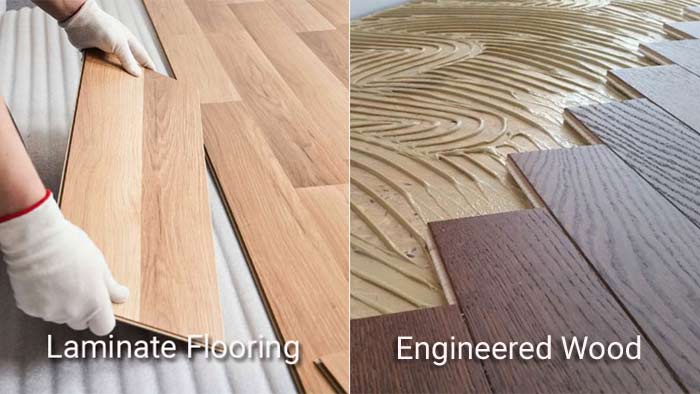The next project on your home improvement to-do list is to update your living room flooring, and you couldn’t be happier to see that old carpeting go. You’ve got a wood look in mind to replace it, and that’s smart thinking considering that wood-look flooring is on-trend these days.
But not so fast. Before you buy, you should know that not all flooring that offers the look of wood is the same. To achieve your desired look, you can choose between engineered wood and laminate flooring.
If you’re trying to decide between these two types of flooring, here’s a rundown on how the two flooring material options differ.
Let’s get started!
Engineered Wood Flooring
A major benefit of engineered oak flooring is that it creates a wood floor look using solid and real wood. That means you get to enjoy the distinct characteristics associated with wood. These characteristics include its character marks, grain, and natural tones.
This is not possible with laminate flooring, which is a synthetic flooring product.
The challenge with engineered flooring compared with its laminate counterpart, however, is that it requires a bit more care. For instance, you may need to use repair kits, touch-up kits, or even scratch concealer to deal with scratches.
You can also sand/refinish engineered flooring several years after you’ve installed it if the veneer remains thick enough. If you protect your engineered wood floors, they have a tendency to last several years longer compared with laminate flooring. Also, if you’re trying to compare bamboo vs hardwood floor, engineered hardwood flooring holds up better than bamboo flooring does.
Engineered flooring also offers the benefit of being relatively moisture and water-resistant. That’s because the wear layers and finishes help with repelling water. This keeps your floorboards from warping, expanding, or shrinking.
People also read this related post
How to Prevent Damaging Your Hardwood Floor
Laminate Flooring
As laminate flooring is a synthetic material, it can mimic the look of wood but doesn’t look exactly like wood if someone were to inspect it closely. However, when it comes to caring, laminate flooring is generally easier to work with.
That’s because this type of flooring is designed to prevent dents and scratches. And that even includes scratches from heavy pieces of furniture or untrimmed dog paws, for example.
Laminate flooring additionally offers the benefit of not staining or fading as quickly as engineered wood does. Still, your laminate floor may chip with time. And unfortunately, it can’t be refinished like engineered wood can be.
Also, like engineered wood, laminate flooring is water-resistant, so it can easily go in the kitchen or bathroom setting. In addition, because it is easy to maintain, just dry mopping or regular sweeping is all that’s needed to keep your floor looking great. If you’re considering laminate options for your home, check out Laminate Flooring Liquidators for a wide selection of affordable and durable flooring solutions.
How We Can Help
Your floor is your room’s foundation. Thus, it’s critical that you choose the flooring that will establish your desired look and create the clean space you want.
Fortunately, both engineered wood flooring and laminate flooring have the ability to set your space’s atmosphere. And they can both positively affect your room’s feeling of comfort, warmth, lighting, and color scheme
Consider the above-listed differences between engineered wood and laminate flooring before you make a flooring purchase this summer. No matter which you choose, you can be confident that you’ll have a natural wood, traditional appearance for your floor for years to come.
Also, if you enjoyed reading this article, check out the rest of our website for more great content.





